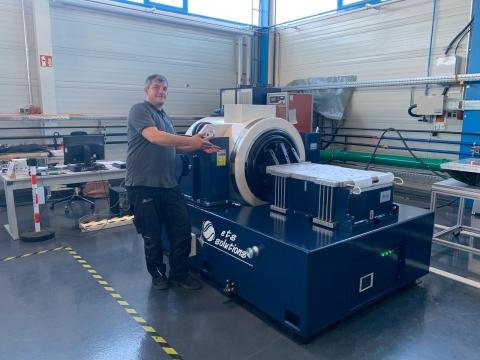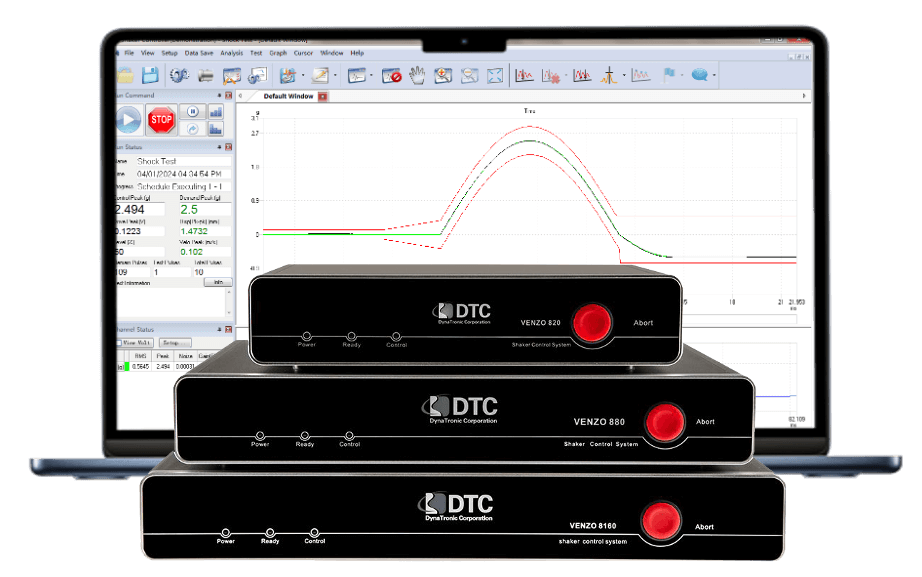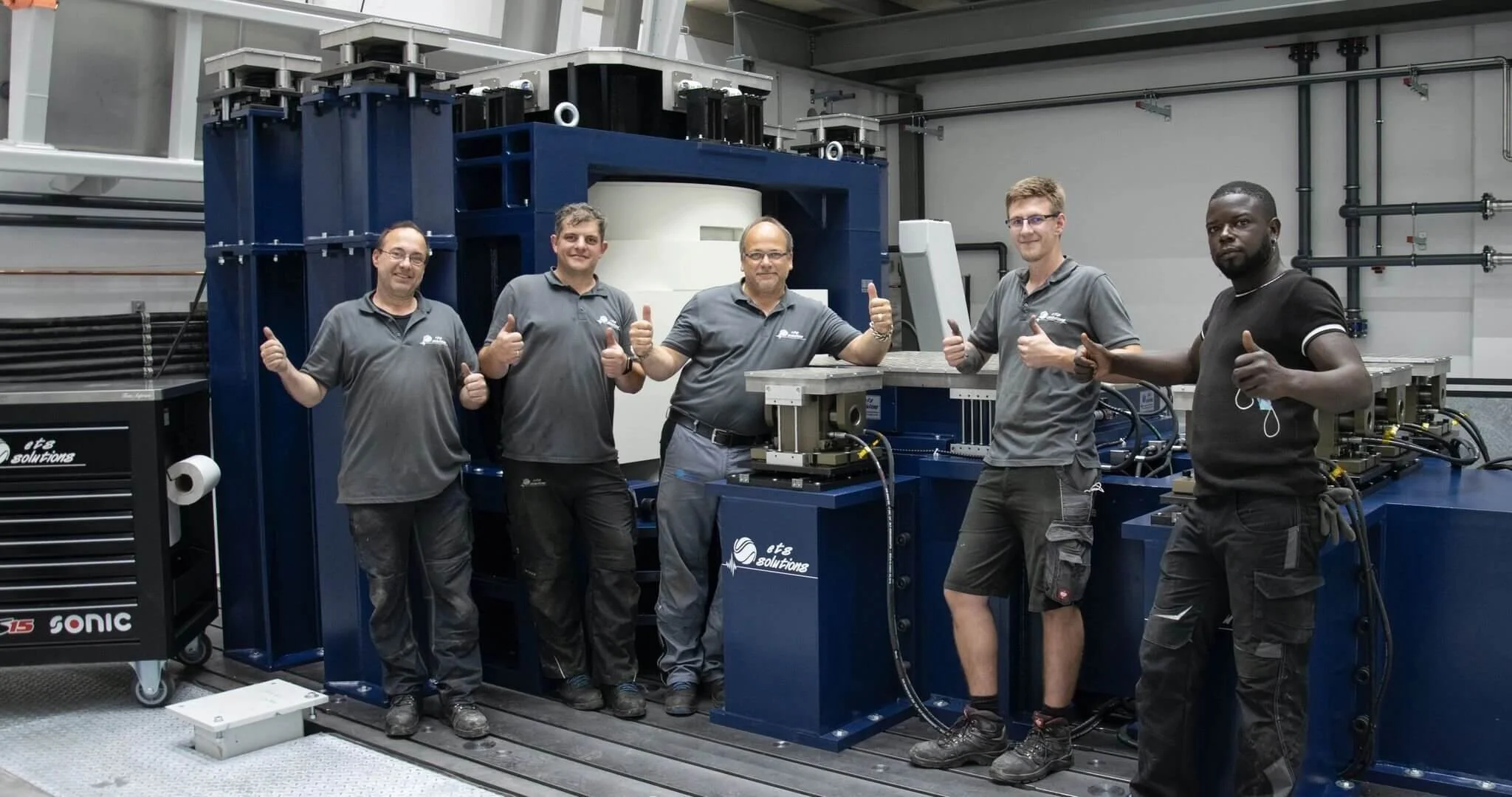Preventive Maintenance Tips for Vibration Testing Equipment
Vibration testing equipment plays a crucial role in various industries, from automotive to aerospace and beyond. At ETS Solutions, we understand how vital these systems are for ensuring the reliability and durability of products. As a leading manufacturer of vibration testing equipment, including electrodynamic shakers, we know that keeping your equipment in optimal condition is essential for delivering accurate results and extending its lifespan. In this article, we’ll explore preventive maintenance tips that can help you maximize the performance and longevity of your vibration testing equipment.
Understanding the Importance of Preventive Maintenance
Preventive maintenance is a proactive approach to maintaining your equipment. Rather than waiting for a failure to occur, preventive maintenance involves regularly scheduled inspections, cleaning, and servicing to keep your equipment running smoothly. For vibration testing equipment, this approach is particularly important due to the precision and complexity involved in these systems.
Benefits of Preventive Maintenance for Vibration Testing Equipment
Improved Reliability: Regular maintenance ensures that your equipment operates reliably, minimizing downtime and ensuring consistent performance during vibration tests.
Cost Savings: By preventing unexpected breakdowns, preventive maintenance reduces repair costs and extends the lifespan of your vibration testing equipment.
Enhanced Safety: Properly maintained equipment reduces the risk of accidents and injuries, ensuring a safe testing environment for your team.
Optimal Performance: Regular maintenance helps maintain the accuracy and precision of your vibration tests, providing you with reliable data for product development.
Key Components of Vibration Testing Equipment
Before diving into maintenance tips, it’s important to understand the key components of vibration testing equipment. These systems are complex and consist of several crucial parts:
1. Electrodynamic Shaker
An electrodynamic shaker is the heart of the vibration testing system. It generates the vibrations needed to test the durability and reliability of products. The shaker's performance is critical for accurate test results, making its maintenance a top priority.
2. Amplifier
The amplifier powers the electrodynamic shaker, controlling the frequency and amplitude of the vibrations. Ensuring the amplifier is functioning properly is essential for consistent test conditions.
3. Vibration Controller
The vibration controller is responsible for setting the test parameters and monitoring the equipment's performance. It ensures that the system operates within the desired specifications.
4. Accelerometers and Sensors
Accelerometers and sensors measure the vibrations applied to the test specimen. They provide valuable data for analyzing the product's response to vibration stress.
5. Cooling System
Vibration testing equipment generates heat during operation, making a cooling system necessary to maintain safe operating temperatures. Ensuring the cooling system is functioning properly prevents overheating and equipment damage.
Preventive Maintenance Tips for Vibration Testing Equipment
Now that we've covered the key components, let's explore some preventive maintenance tips to keep your vibration testing equipment in top condition:
1. Regular Inspections
Conduct regular inspections of your vibration testing equipment to identify any signs of wear or damage. Look for loose connections, damaged cables, and worn-out components. Regular inspections help catch issues early, preventing them from escalating into major problems.
Tip: Create a checklist for routine inspections, covering all critical components such as the shaker, amplifier, and sensors.
2. Calibration
Calibration is essential for maintaining the accuracy and precision of your vibration tests. Over time, equipment may drift from its original calibration settings, affecting test results. Schedule regular calibration sessions to ensure your equipment provides accurate data.
Tip: Use calibration tools recommended by the manufacturer to achieve the best results.
3. Cleanliness
Keep your vibration testing equipment clean to prevent dust and debris from affecting its performance. Dust can accumulate in sensitive components, leading to overheating and malfunction.
Tip: Use compressed air to clean the equipment and ensure that cooling fans and vents are free from obstructions.
4. Lubrication
Proper lubrication of moving parts is crucial for reducing friction and wear. Regularly lubricate bearings, gears, and other mechanical components to ensure smooth operation.
Tip: Follow the manufacturer’s guidelines for lubrication intervals and use recommended lubricants.
5. Cooling System Maintenance
Ensure that the cooling system is functioning properly to prevent overheating. Check for any blockages in cooling ducts or fans and inspect the coolant levels if applicable.
Tip: Schedule regular maintenance for the cooling system and replace any faulty components promptly.
6. Vibration Isolation
Ensure that your vibration testing equipment is properly isolated to prevent external vibrations from affecting the test results. Check the condition of vibration isolation mounts and replace them if they show signs of wear.
Tip: Install vibration isolation pads or mounts according to the manufacturer's recommendations.
7. Electrical Connections
Inspect all electrical connections and wiring for signs of wear or corrosion. Loose or damaged connections can lead to equipment failure and inaccurate test results.
Tip: Use electrical contact cleaner to clean connections and tighten any loose terminals.
8. Software Updates
Keep the software used to control the vibration testing equipment up to date. Software updates often include performance enhancements and bug fixes that can improve the equipment’s functionality.
Tip: Regularly check the manufacturer’s website for software updates and install them as needed.
9. Documentation and Record Keeping
Maintain detailed records of all maintenance activities, including inspections, calibrations, and repairs. This documentation helps track the equipment’s history and identify recurring issues.
Tip: Use maintenance management software to keep track of maintenance schedules and records.
10. Operator Training
Ensure that all operators are properly trained in the use and maintenance of vibration testing equipment. Knowledgeable operators are more likely to spot potential issues and take corrective action.
Tip: Provide ongoing training and refresher courses to keep operators informed about best practices.
Choosing ETS Solutions for Your Vibration Testing Needs
At ETS Solutions, we understand the importance of reliable vibration testing equipment for your business. Our state-of-the-art vibration test systems, including electrodynamic shakers, are designed to deliver accurate results and withstand the rigors of daily operation.
Why Choose ETS Solutions?
Quality and Reliability: Our equipment is built to the highest standards, ensuring durability and precision in every test.
Expert Support: Our team of experts is always available to assist with maintenance, calibration, and technical support.
Comprehensive Solutions: From electrodynamic shakers to complete vibration testing systems, we offer a wide range of products to meet your specific needs.
Customization: We work closely with you to tailor our solutions to your unique requirements.
Final Thoughts
Preventive maintenance is the key to ensuring your vibration testing equipment operates at peak performance. By following these maintenance tips, you can extend the lifespan of your equipment, improve test accuracy, and reduce downtime.
At ETS Solutions, we’re committed to helping you achieve your testing goals with high-quality equipment and expert support. Contact us today to learn more about our vibration testing solutions and how we can help you succeed.







